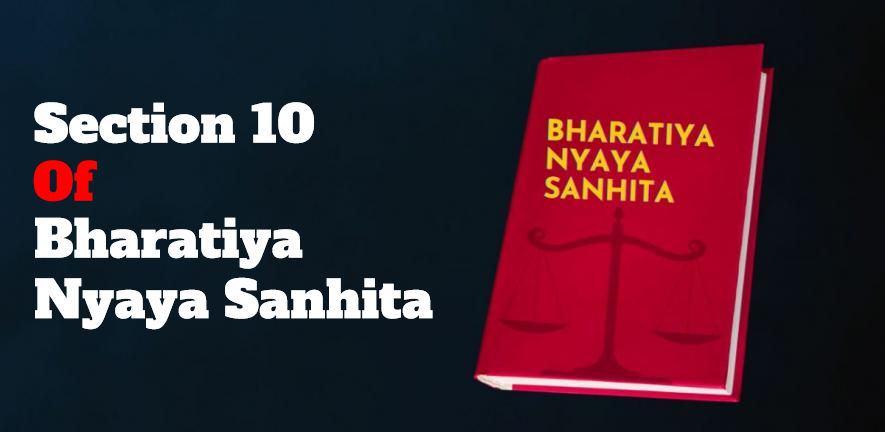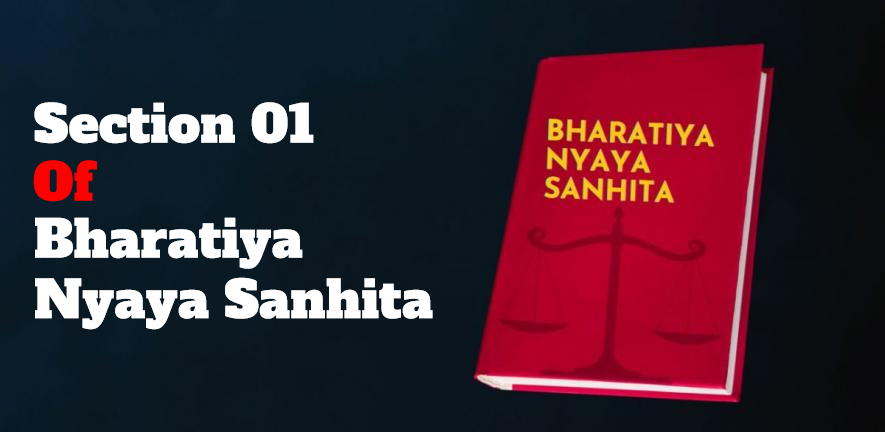Section 10 BNS – Section 10 of New Bharatiya Nyaya Sanhita
- Section 10 BNS – Section 10 of New Bharatiya Nyaya Sanhita
- Historical Context
- Objectives of Section 10
- Main Provisions
- Definition of Terms
- Scope of Application
- Implementation Strategies
- Effects on Legal Procedures
- Comparison with Previous Laws
- Case Studies
- Public and Professional Feedback
- Challenges and Criticisms
- Recent Amendments
- International Perspectives
- Conclusion
- FAQs
The New Bharatiya Nyaya Sanhita (BNS) represents a significant reform in India’s legal landscape, aiming to modernize and streamline the legal system. Section 10 of the BNS is a crucial element of this reform, introducing essential guidelines, definitions, and procedures necessary for the effective administration of justice. Understanding Section 10 is vital for anyone involved in the Indian legal system.
Historical Context
India’s legal system has a rich history, evolving through various phases influenced by ancient traditions, colonial rule, and modern democratic principles. The New Bharatiya Nyaya Sanhita is a contemporary effort to unify and modernize these diverse legal traditions, making the legal system more coherent and effective.
Objectives of Section 10
Section 10 is designed to achieve several key objectives:
- Provide clear definitions of legal terms and procedures.
- Establish guidelines for judicial and administrative processes.
- Ensure consistency and fairness in the application of laws.
These objectives are central to improving the efficiency and transparency of the legal system.
Main Provisions
Section 10 contains several important provisions, including:
- Definitions of key legal terms such as “due process,” “public interest,” and “legal accountability.”
- Guidelines for the conduct of judicial and administrative proceedings.
- Standards for interpreting and applying laws.
These provisions aim to eliminate ambiguities and provide a clear framework for legal processes.
Definition of Terms
One of the primary roles of Section 10 is to define critical legal terms. For example, the term “due process” is precisely defined to ensure uniform understanding and application. Similarly, “public interest” is clearly defined to establish the scope of its responsibilities and powers.
Scope of Application
Section 10 applies to a wide range of legal contexts, including criminal, civil, and administrative cases. Its provisions impact various stakeholders, including judges, lawyers, law enforcement officers, and the general public. Understanding the scope of these laws is essential for comprehending their broader implications.
Implementation Strategies
The effective implementation of Section 10 involves multiple entities, including the judiciary, law enforcement agencies, and administrative bodies. Each plays a vital role in upholding the standards set by this section. Continuous training and updates for these entities are crucial for maintaining compliance and effectiveness.
Effects on Legal Procedures
Section 10 has introduced significant changes to legal procedures in India. By providing clear definitions and standardized guidelines, it has streamlined judicial processes and reduced delays. These improvements have led to more consistent and predictable legal outcomes, benefiting all parties involved.
Comparison with Previous Laws
Compared to earlier statutes, Section 10 offers a more unified and systematic approach to legal definitions and procedures. Previous laws often had overlapping or conflicting provisions, which Section 10 has resolved. The new provisions offer greater clarity and coherence, making the legal system more efficient and user-friendly.
Case Studies
Several landmark cases have highlighted the impact of Section 10. For instance, in [Case A], the clear definition of “due process” provided by Section 10 led to a decisive ruling. Similarly, in [Case B], the guidelines for judicial proceedings streamlined the case, resulting in a timely and fair verdict. These cases demonstrate the practical benefits of Section 10.
Public and Professional Feedback
The response to Section 10 from the public and legal professionals has generally been positive. Many appreciate the clarity and efficiency it brings to the legal system. However, as with any significant reform, there are varied opinions, and some critiques exist. Overall, the feedback reflects the section’s effectiveness and importance.
Challenges and Criticisms
Despite its advantages, Section 10 faces several challenges. Implementing comprehensive reforms requires time and resources, and some regions have struggled with the transition. Additionally, certain definitions and guidelines have been criticized for being overly broad or open to interpretation. Addressing these issues is crucial for the continued success of Section 10.
Recent Amendments
To address various challenges and criticisms, Section 10 has undergone several amendments. These updates aim to refine definitions and procedures, making the section even more effective. Keeping track of these changes is important for anyone involved in the legal system, as they reflect the evolving nature of legal practice.
International Perspectives
When compared to similar laws in other countries, Section 10 of the BNS stands out for its comprehensive approach. Countries like the United States and the United Kingdom have similar provisions that aim to standardize legal definitions and procedures. By learning from these international examples, India has created a robust legal framework through Section 10.
Conclusion
Section 10 of the New Bharatiya Nyaya Sanhita is a cornerstone of India’s legal reform efforts. By providing clear definitions and standardized guidelines, it enhances the efficiency and transparency of judicial and administrative proceedings. As India continues to evolve its legal system, Section 10 will play a critical role in shaping its future, ensuring fairness and consistency for all.
FAQs

Adv Ashish Sharma has dedicated his career to helping individuals and businesses navigate the intricate legal landscape with confidence. From providing expert advice on current legal issues to offering clear explanations of legal principles, he strives to empower his audience with knowledge and understanding.


